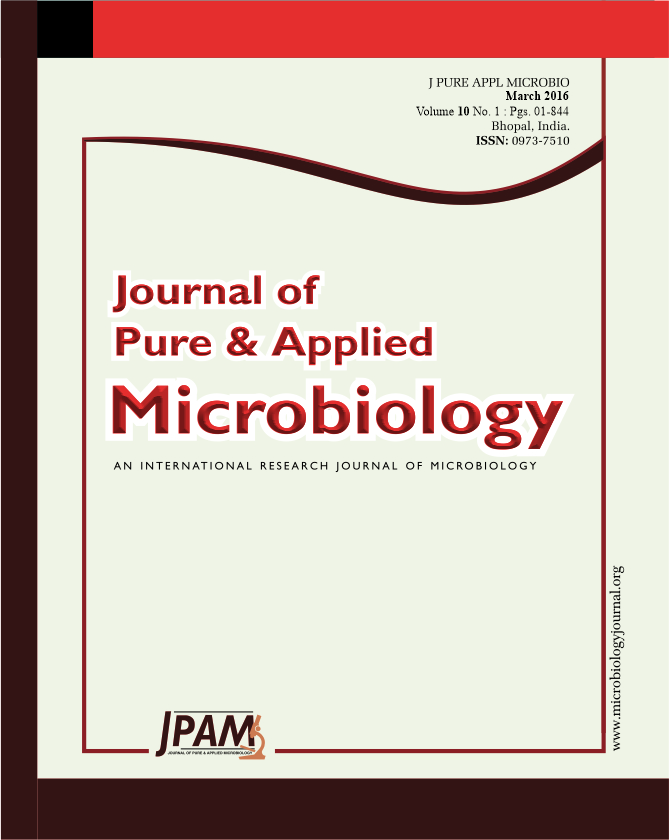Cotton is one of the most ancient and important commercial crop in India. It is regarded as ‘King of Fiber’, back bone of our sprawling textile industry and fetching an export earning besides providing employment to farming community. Alternaria, a major foliar fungal pathogen showed wide variability with respect to morphological and cultural aspects were concerned. Conidial septation of ten isolates ranged from 1-2 vertical and 4-6 horizontal septa. Conidial size varied from 21.5 x 6.87µm (Haveri) to 49.38 x 12.82µm (Karlakatti). Out of ten isolates, two resembled A. macrospora and three resembled A. alternata. Maximum dry mycelial weight of A. macrospora was observed after sixteen days of incubation. These isolates were cultured on different solid media as part of variability study and the colony colour varied from grey to black, with white to black colony margin either irregular or smooth, raised to flat mycelial growth and sectoring was observed in few isolates.
Alternaria, Variability, Isolates, Bt cotton.
© The Author(s) 2016. Open Access. This article is distributed under the terms of the Creative Commons Attribution 4.0 International License which permits unrestricted use, sharing, distribution, and reproduction in any medium, provided you give appropriate credit to the original author(s) and the source, provide a link to the Creative Commons license, and indicate if changes were made.


